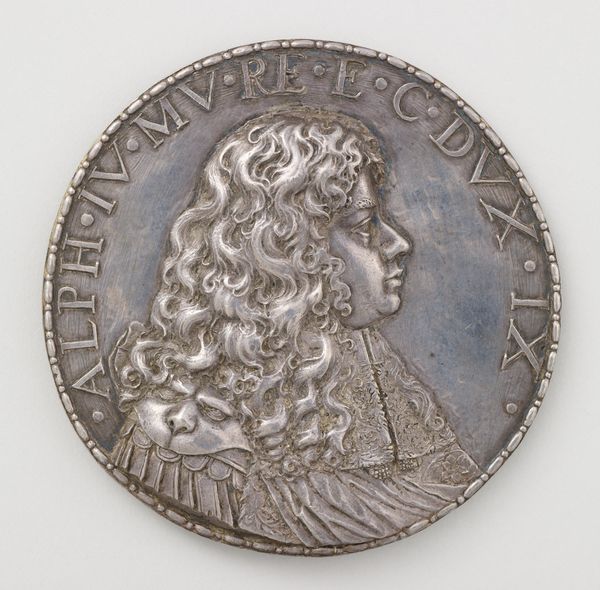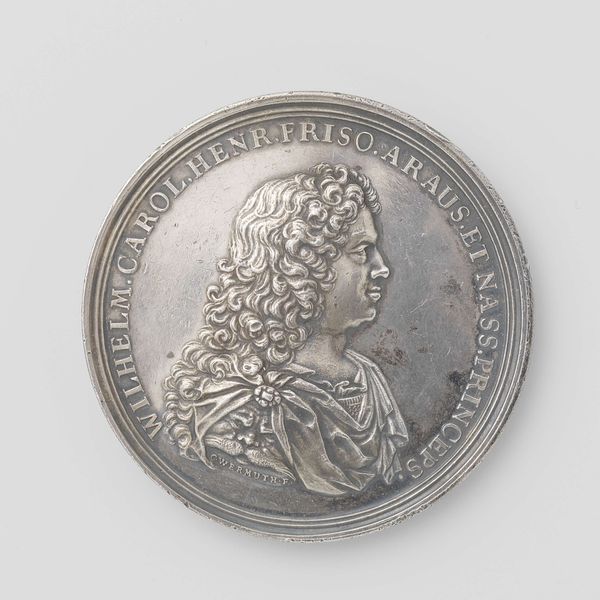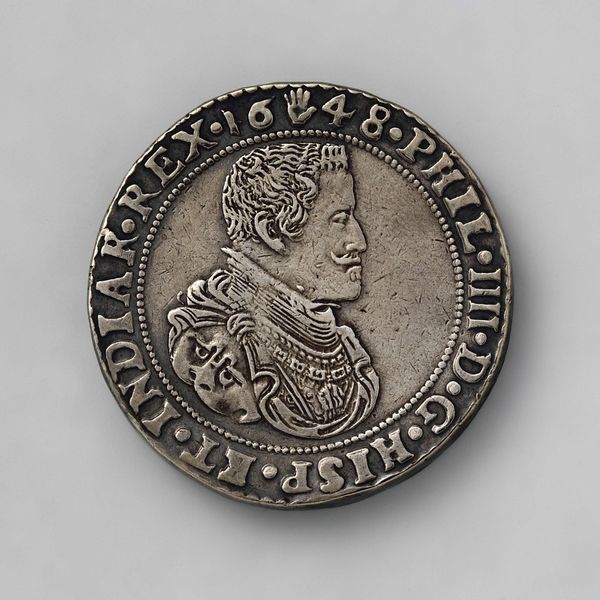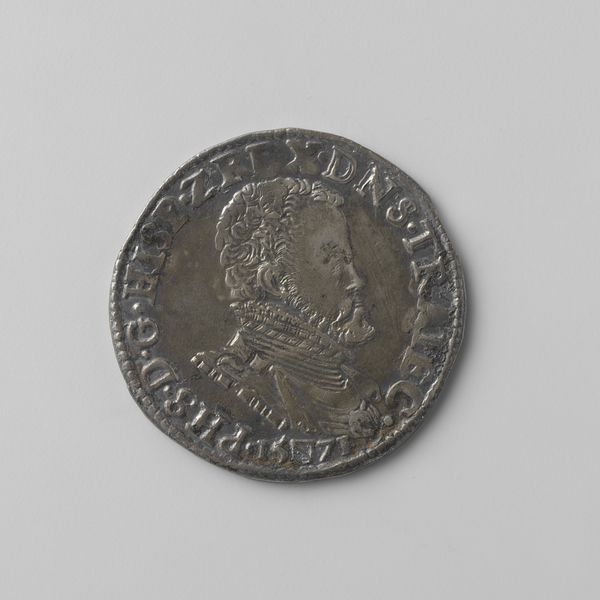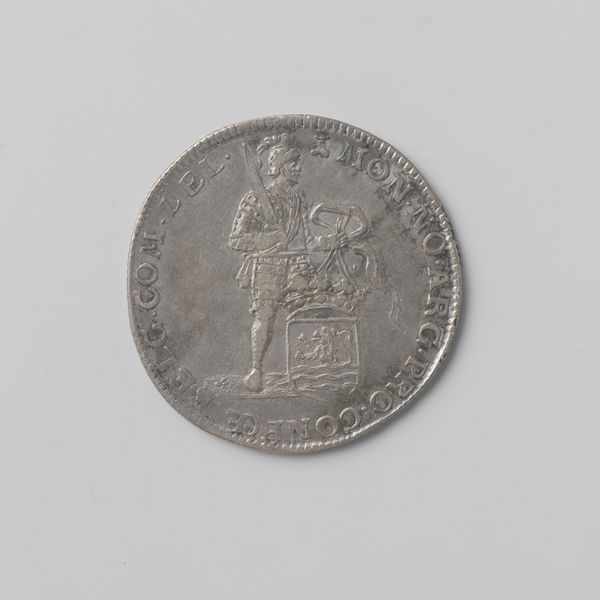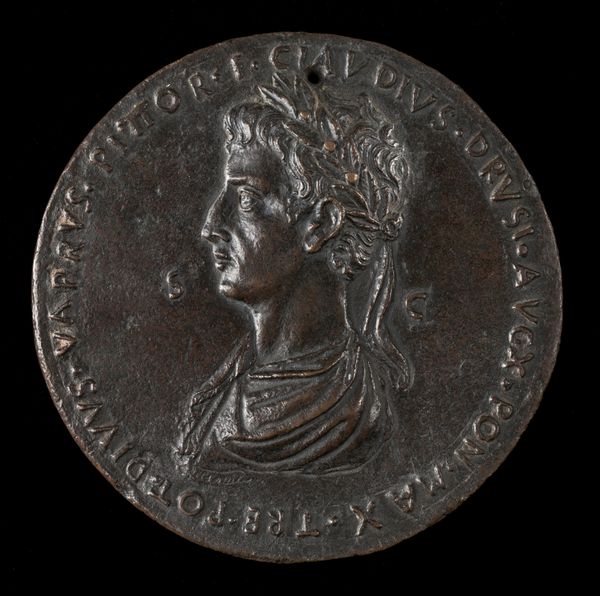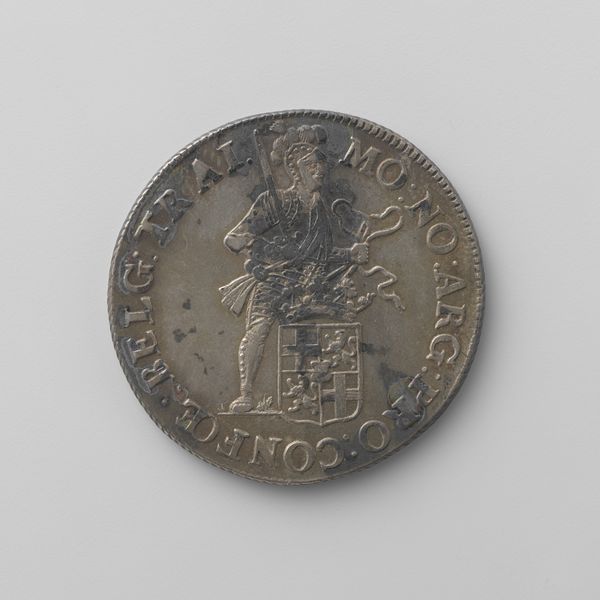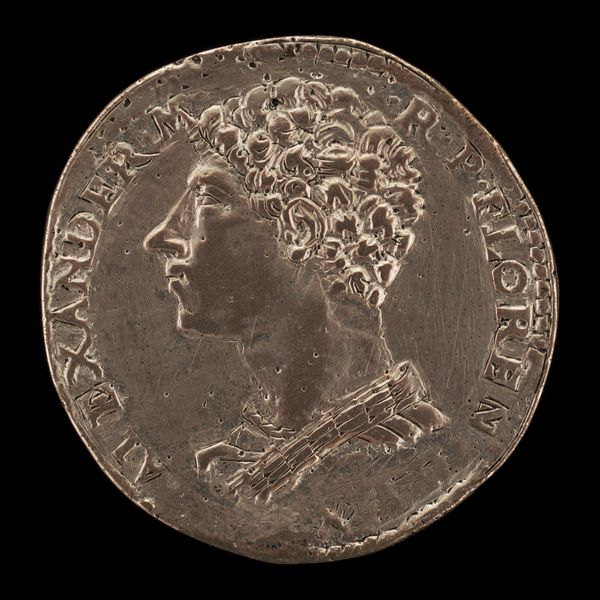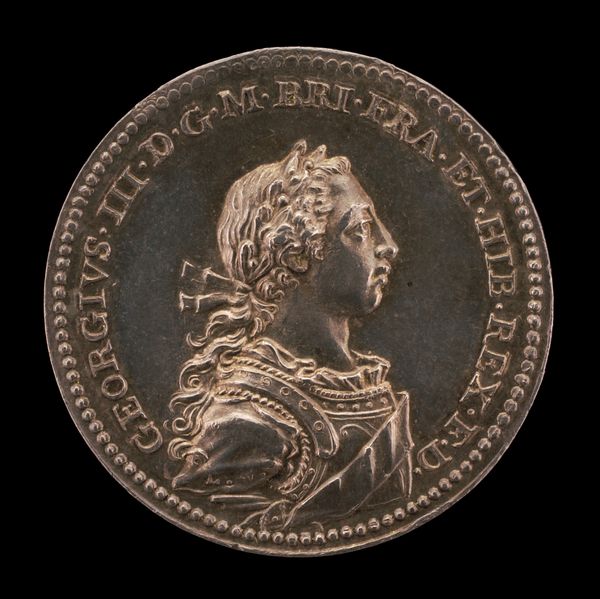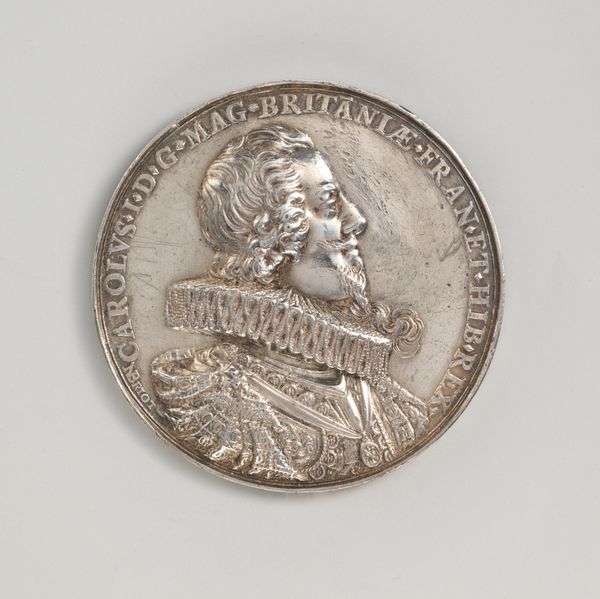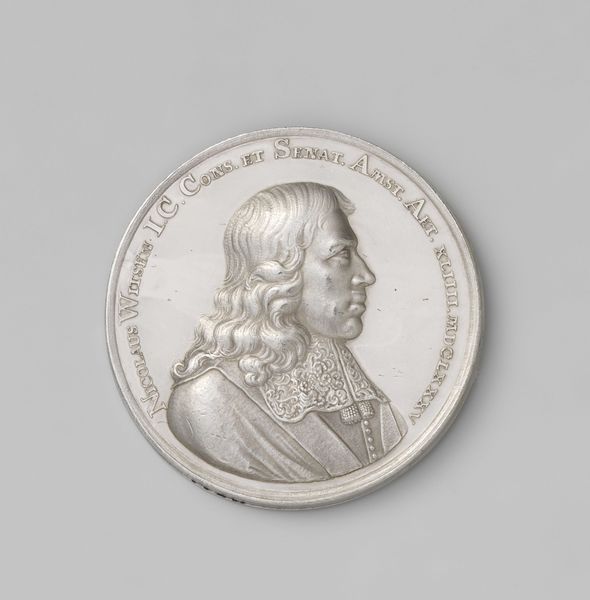
Inhuldiging van Willem Karel Hendrik Friso als stadhouder van Friesland, landdagpenning van de Staten van Friesland 1731
0:00
0:00
metal, relief, sculpture, engraving
#
portrait
#
baroque
#
metal
#
relief
#
sculpture
#
engraving
Dimensions: diameter 3.6 cm, weight 15.3 gr
Copyright: Rijks Museum: Open Domain
Curator: Here we have a striking medal created in 1731 to commemorate Willem Karel Hendrik Friso’s inauguration as Stadtholder of Friesland. It’s a landdagpenning, commissioned by the States of Friesland. Editor: Immediately, I see the imposing profile. His gaze is serious, a certain expectation in those sculpted features. It's interesting how the circular format lends it a feeling of timelessness and permanence, almost like looking at an ancient Roman coin. Curator: Indeed. The medal itself is a product of Baroque aesthetics. Notice the ornate, almost theatrical detail, especially in his elaborate wig and the decorative armor. This was a key moment of transition in Frisian governance. By commissioning this medal, the States are participating in shaping Willem Karel Hendrik Friso’s political persona from the moment he is invested with power. Editor: That wig! All those cascading curls carry such symbolic weight; royalty, status, control... even a certain fashion-consciousness! And the armor underneath suggests not just protection but martial authority. What symbolism is deployed by his pose and how is his expression relevant? Curator: The profile portrait was, of course, a deliberate choice echoing ancient Roman rulers to assert authority and lineage. Consider that it served a crucial function in disseminating and reinforcing images of power across social strata at a time when portraiture for the masses was difficult and coinage or medals often offered more people access. It reinforced loyalty, belonging, and the perception of power. Editor: Medals were undoubtedly potent objects of communication, especially then. The Latin inscription circles his image like a halo – emphasizing both his power and an aura of permanence. Is there anything unique about the imagery chosen in relation to the specifics of Friesland’s history? Curator: What’s significant is what isn't shown. Instead of local symbols, we see this emphasis on the traditional, classical, and Baroque codes for sovereignty, likely due to his ascendancy occurring after a period without a Stadtholder. The work tries to create a sense of renewed stability. The very act of minting these and distributing them, embedding them within the social fabric, represents an attempt at managing perceptions of power. Editor: So, it's more about solidifying his place in a wider framework of governance and prestige rather than linking directly to Frisian cultural iconography? A blank slate waiting to be inscribed? Curator: Precisely. Its true symbolic function lies in the public perception it aimed to mold, more than the precise depiction of local emblems. Editor: Knowing all this allows you to look at what appears at first like just a fancy portrait and consider how carefully designed the image is, as well as understand what the commissioning of its creation represents politically. Curator: Yes, and the study of such objects deepens our understanding of not only art history but the social history and visual politics of its time.
Comments
No comments
Be the first to comment and join the conversation on the ultimate creative platform.

